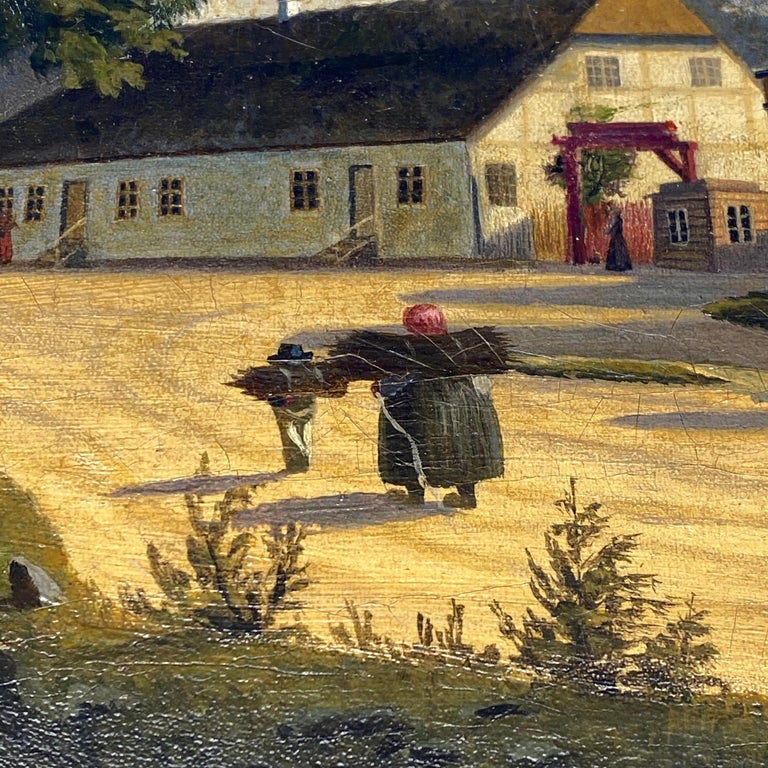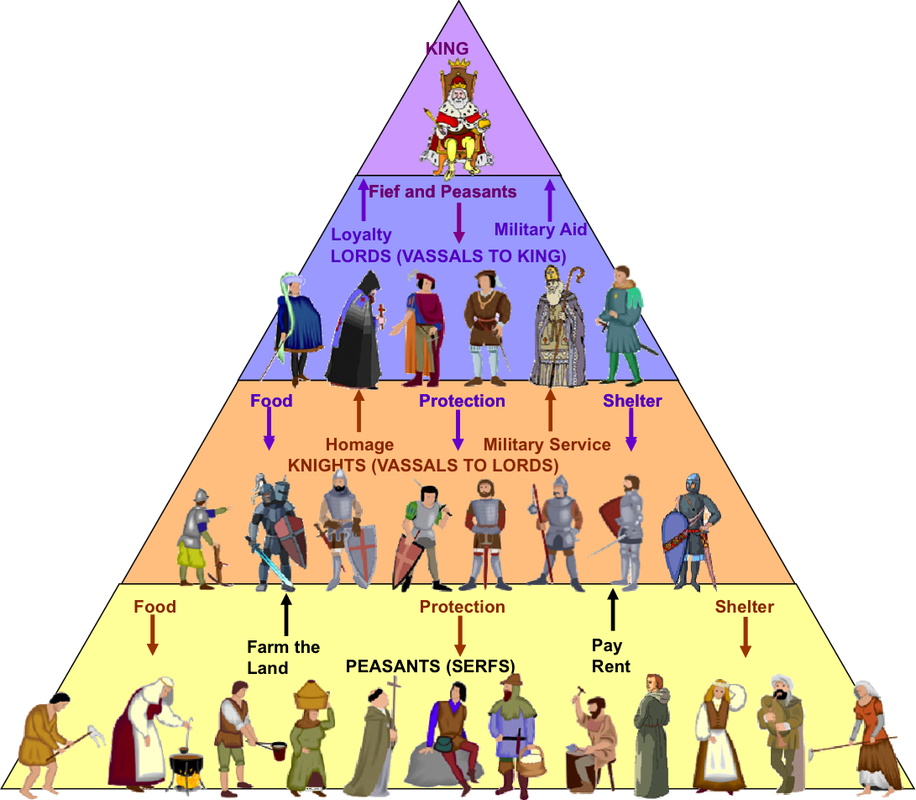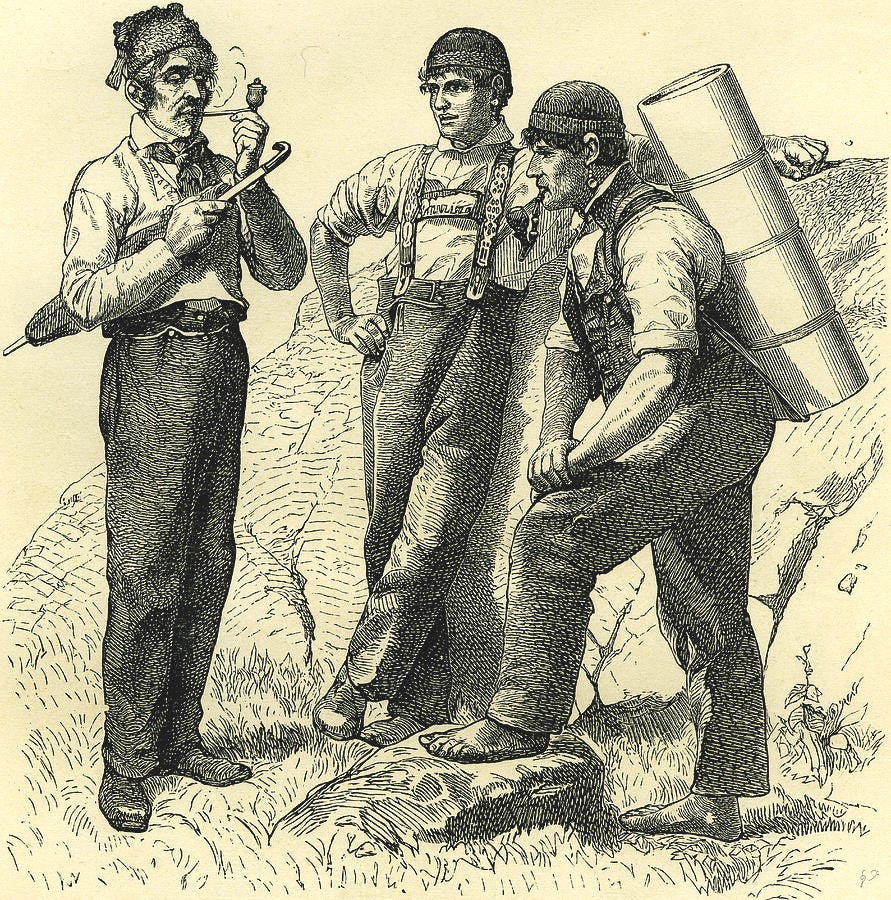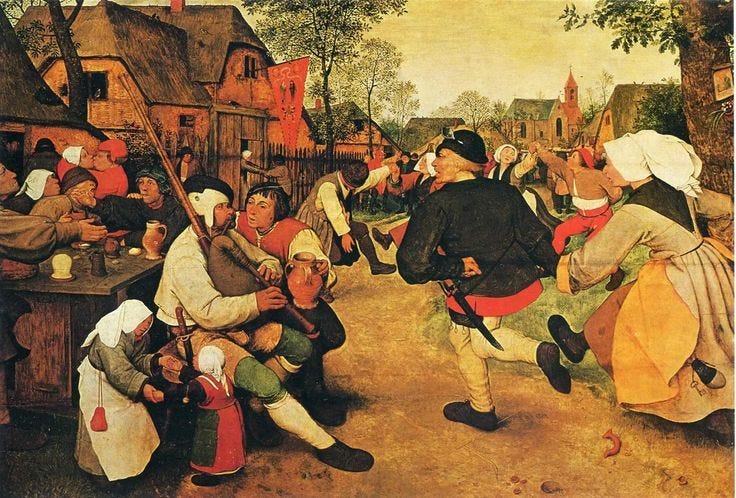Most of the following is an excerpt from my book From Poverty to Progress: Understanding Humanity’s Greatest Achievement. You can purchase discounted copies of my book at my website, or pay full prize at Amazon.
Free Peasant Societies
So far I have written several articles on society types, which I believe is a critical concept to understand human history. I have covered:
Horticultural societies (which invented agriculture)
Agrarian societies (which dominated most of recorded history)
Commercial societies (which invented human material progress)
There is one more type of society that I want to briefly discuss: the Free Peasant society. Switzerland, Denmark, Norway, and Sweden were the most important Free Peasant societies in history. Early Flanders (modern-day Belgium) and the Netherlands were likely also Free Peasant societies in their early development.
Free Peasant societies are Agrarian societies of a very special type. Like Agrarian societies, Free Peasant societies produce the majority of their calories from:
Farming domesticated plants (using animal-driven iron plows) and
Raising domesticated animals.
Where Free Peasant societies differ from Agrarian societies is their political and economic structure. This all came down to patterns in land ownership.
In most Agrarian societies, fertile lands are owned by some combination of:
Kings and Emperors
Titled aristocrats and nobles
Religious organizations, usually in the form of ecclesiastical organizations
The ownership of the main means to create wealth, fertile land, gave these landed elites an enormous amount of political and economic power. They could then use that power to build powerful militaries. Meanwhile, the peasants could do little more than work hard on the land owned by elites.
In Free Peasant societies, however, the patterns of land ownership were very different. All three of the above classes owned a comparatively small portion of the land. Most of the land was owned by:
Peasants who owned their own farm
Middling landowners who rented their lands out to peasants who had secure tenure at rates set by the market.
This difference in landownership fundamentally transformed the political and economic structure of these societies. It also created huge differences in the culture of these lands.
Free Peasant societies were extremely rare and had a limited direct impact on world history (at least at first). Free Peasant societies shared the subsistence patterns of Agrarian societies and their lack of large trade-based cities. But Free Peasant societies lacked the centralized extractive institutions of Agrarian societies. Free Peasant societies were an ocean of peasants who typically owned their own land or rented it consensually from small landlords.
While Agrarian societies glorified status and hierarchy, Free Peasant societies were fiercely egalitarian. They lacked titled nobility, or where they existed, titled nobilities owned a very small percentage of the land. Those titled nobles were also not as influential in political affairs.
As we will see later, the lack of centralized extractive institutions made Free Peasant societies much more willing to adopt technologies, skills, and social organizations from more economically successful societies. The lack of centralized extractive institutions enabled Free Peasant societies in Europe to industrialize much earlier than Agrarian societies.
It is not an accident that these societies are still some of the most egalitarian societies on the planet. Nor is it an accident that these societies have far higher levels of trust than most other people. Their cultures evolved without the domination of extracting elites, so peasants learned to trust each other and work together to solve common problems in highly efficient ways. Because of all of this, societies that were once poor Free Peasant societies are now some of the wealthiest and most prosperous societies on Earth.
Where Free Peasant societies evolved
Free peasant societies required geography and technology that was conducive to plow-based farming, but also not so conducive as to draw the attention of the far more powerful Agrarian empires. The leaders of Agrarian empires were always on the lookout for new lands to conquer, and the more fertile the land was the better the target.
For this reason, Free Peasant societies tended to evolve on the peripheries of agricultural regions and on hilly or swampy terrain where the soil was not as good or had defensible terrain. Switzerland had mountainous terrain and Scandinavia was separated from the Continental mainland (except for the neck of Jutland in Denmark). Neither region was worth a military campaign.
Characteristics
Free Peasant societies had the following characteristics that were very different from other societies. The most important characteristic was a large population of farmers who either:
Own their land
Pay monetary rent and secure tenure.
Free Peasant societies also tended to have:
High levels of adult literacy, particularly in rural areas.
Low rates of urbanization
High levels of trust
Most importantly, Free Peasant societies lacked the powerful centralized extractive institutions run by titled elites. Those elites extracted the food surplus from a dependent peasantry who had no choice but to cooperate. What made the difference is who owned the land.
When the peasants owned their own land, they could resist forced extraction. When they did not, their landlords could extract the maximum possible level of the food surplus for their own use.
The funds from extraction paid for powerful militaries that could conquer new lands for extraction. Agrarian regimes had a relentless drive towards centralization as the extractors got more money and could then use that money to conquer new lands. In Free Peasant societies, elites could not do so.
So the peasants in Free Peasant societies were far better off than their brothers in Agrarian regimes, and they knew it. To preserve their land and independence from predatory elites, Free Peasant societies often evolved
Decentralized governance (to protect from internal predatory elites)
Citizens militia (to protect from external predatory empires)
Examples of Free Peasant societies
The concept of Free Peasant societies has received very little historical research, it is not clear which societies qualify and which do not. Below is a list of societies that display many characteristics of Free Peasant societies. With further research, this list may be expanded or reduced:
Some clear examples of Free Peasant societies include
Netherlands (pre-1500) where the peasants worked together to drain wetlands to create their own land that was free from titled nobility
Flanders (pre-1400)
Switzerland which achieved one of the few successful peasant revolts in the late 13th Century.
Scandinavia
Denmark (where serfdom was not introduced until 1733, and it was abolished serfdom in 1788)
Norway (which never had feudalism)
Sweden (where feudalism was very weak and the Swedish monarchy even allied with the peasants against nobles so he could build a Royal army)
Finland? (not sure about this one)
Other European regions had characteristics of Free Peasant societies, but they lacked the political independence to fully grow into their own political form:
Parts of Rhineland Germany
Scattered regions within Northern France:
Alsace-Lorraine (traditionally part of the German Rhineland)
Normandy (which was never fully feudalized)
Parts of Brittany (which was never fully feudalized)
Cossacks in eastern Ukraine and southern Russia
Scattered parts of the Balkans after the Ottomans withdrew
I think that it is also reasonable to see a few modern societies as having clear characteristics of Free Peasant societies in their rural hinterlands:
Northern France after the revolutionary abolition of feudal obligations (post-1793)
Colonial British American and the western edges of the United States (roughly pre-1820)
Canada (roughly pre-1890)
Australia (roughly pre-1900)
New Zealand (roughly pre-1900)
South Africa (Boers)
Costa Rica
Each of the above regions gradually expanded their agricultural productivity and transportation networks, so farmers were able to export their surpluses to the cities. This eventually made them more like Commercial farmers than peasants. Eventually, all these regions industrialized.
The significance of Free Peasant societies
Free Peasant societies are not just of historical significance. They had a sizable impact on modern economic history. Anyone familiar with economic history and the industrialization process can immediately spot them as early industrializers.
Here is a list of European nations roughly in the order they industrialized. Belgium, Netherlands, and the UK surpassed the Western European average well before industrialization, while all other nations had to wait until long afterwards. In parentheses, I include the year that the nation surpassed Angus Maddison’s estimated per capita for Western Europe at the time:
The United Kingdom (surpassed the Western European average in 1600): a Commercial society that was clearly the first nation to industrialize.
Belgium (1500): likely a Free Peasant society before 1400, which then evolved into a Commercial society in the 15th and 16th Centuries before it was crushed by the Spanish conquest in 1556. Then after independence in 1830, the Belgian nation quickly copied industrial technologies and became the first continental nation to industrialize.
The Netherlands (1600): likely a Free Peasant society before 1500, which then evolved into a Commercial society in the 16th Century.
Unlike Belgium, the Netherlands maintained its independence and became the richest nation in the world in the 17th Century. While late to industrialize, the Netherlands was still one of the richest nations in Europe throughout the 19th Century.Switzerland (1874): a Free Peasant society.
Denmark (1901): while partially feudalized in the 18th Century, Denmark was clearly a Free Peasant society.
Sweden (1930): another clear Free Peasant society.
Early industrializers were dominated by:
Commercial societies
and then Free Peasant societies.
Norway is the only example of a society that appears to have been a Free Peasant society, but which also industrialized fairly late. Only afterward most of the Commercial and Free Peasant societies industrialized did Agrarian societies begin to industrialize. The first Agrarian society to industrialize was Germany, which I will cover in a later article.
By the way, if you include Anglo nations, the ordered list for when the nation surpassed Angus Maddison’s estimated per capita for Western Europe at the time looks like this:
The United Kingdom (surpassed the Western European average in 1600)
Belgium (1500)
The Netherlands (1600)
United States (1820)
Australia (1820)
New Zealand (1860)
Switzerland (1874)
Canada (1901)
Denmark (1901)
Sweden (1930)
Once again, we can see nations that had clear indications of being a Free Peasant society who were early industrializers.
So why did Free Peasants industrialize early?
As far as I know, there has never been any research done on this subject, so I can only speculate. I believe that the reason Free Peasant societies were early to industrialize:
Free Peasant societies were either geographically or culturally proximal to the UK. Both of which are major determining factors in how willing a society is to copy another society.
Free Peasant societies lacked extractive institutions and landed elites who feared industrialization as potentially undermining their political power. As long as they did not face a sizable military threat, the leaders of Agrarian regimes would rather rule a poor nation than be members of prosperous societies with broadly shared political power.
Governments in Free Peasant societies, being more consensual, wanted their citizens to enjoy the benefits of economic prosperity and so were willing to copy what worked in other nations.Free Peasant societies had high levels of trust, so they were willing to copy practices that worked in richer societies.









Thanks for the restack!
Two obvious comments: what about the Mediterranean republics of Antiquity? Secondly, is there any comprehensive paper where this concept is developed? Regarding Netherlands, their society was extremely urbanized even in the Middle Ages; are you sure the Italian medieval republics shall not be here? In any case, thanks for the post!